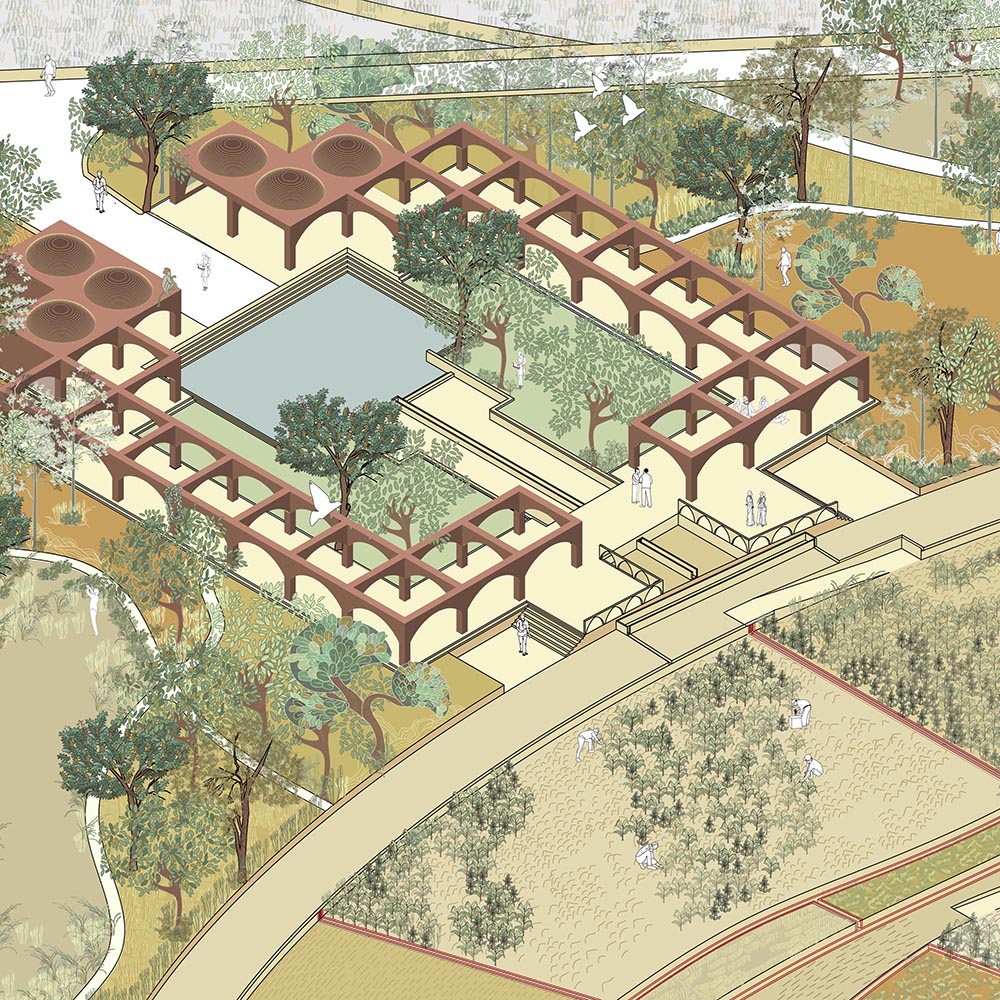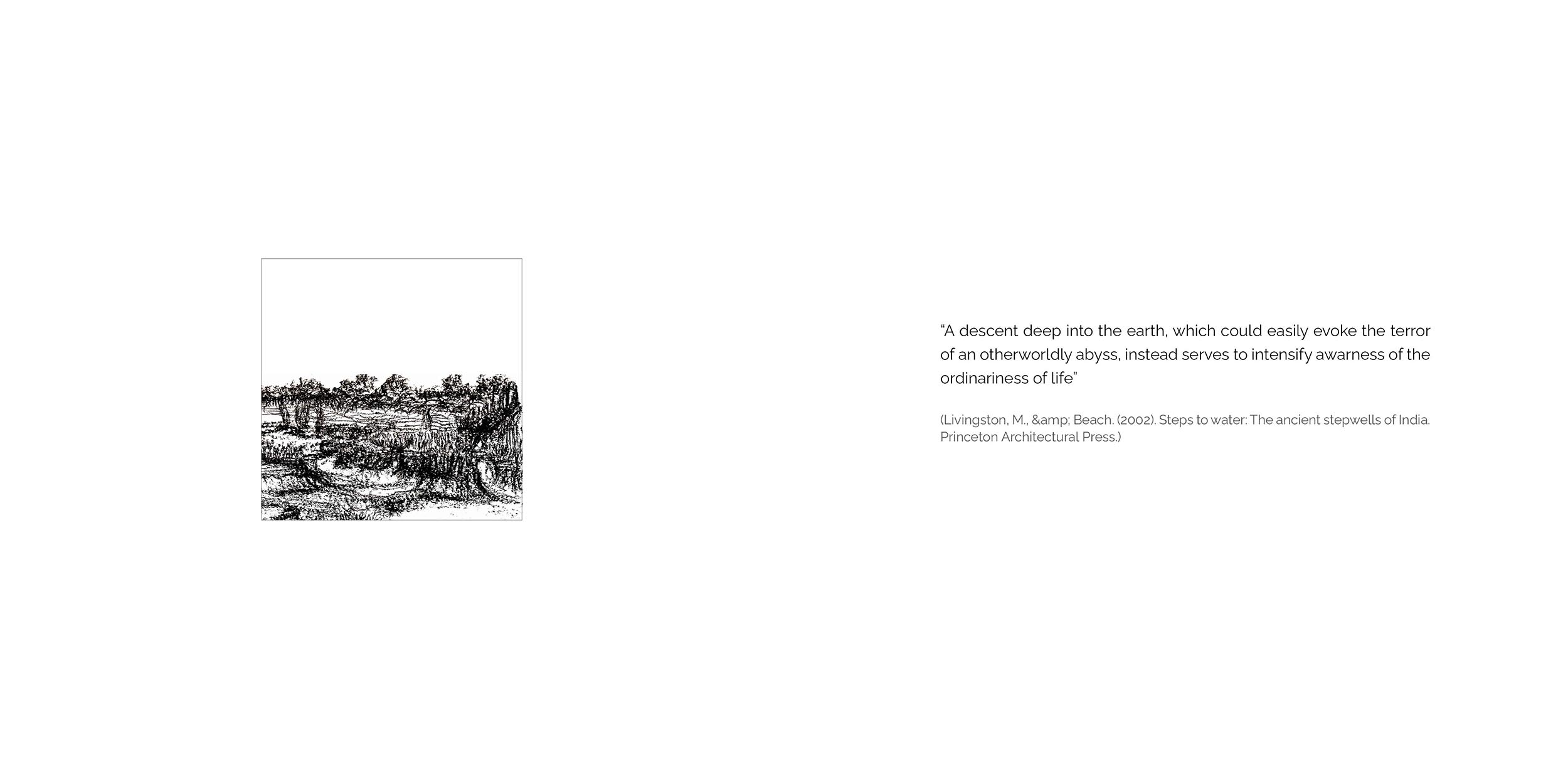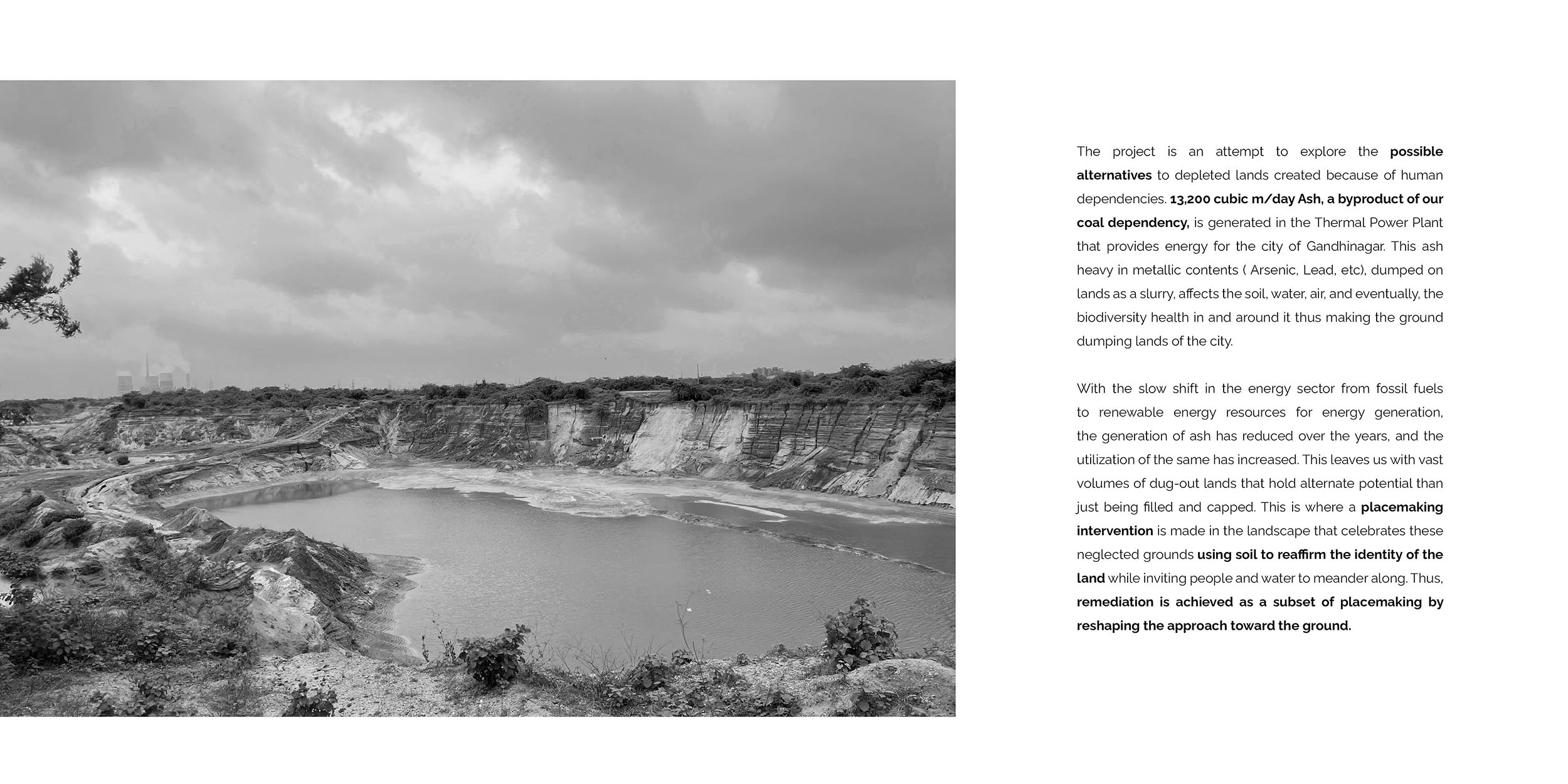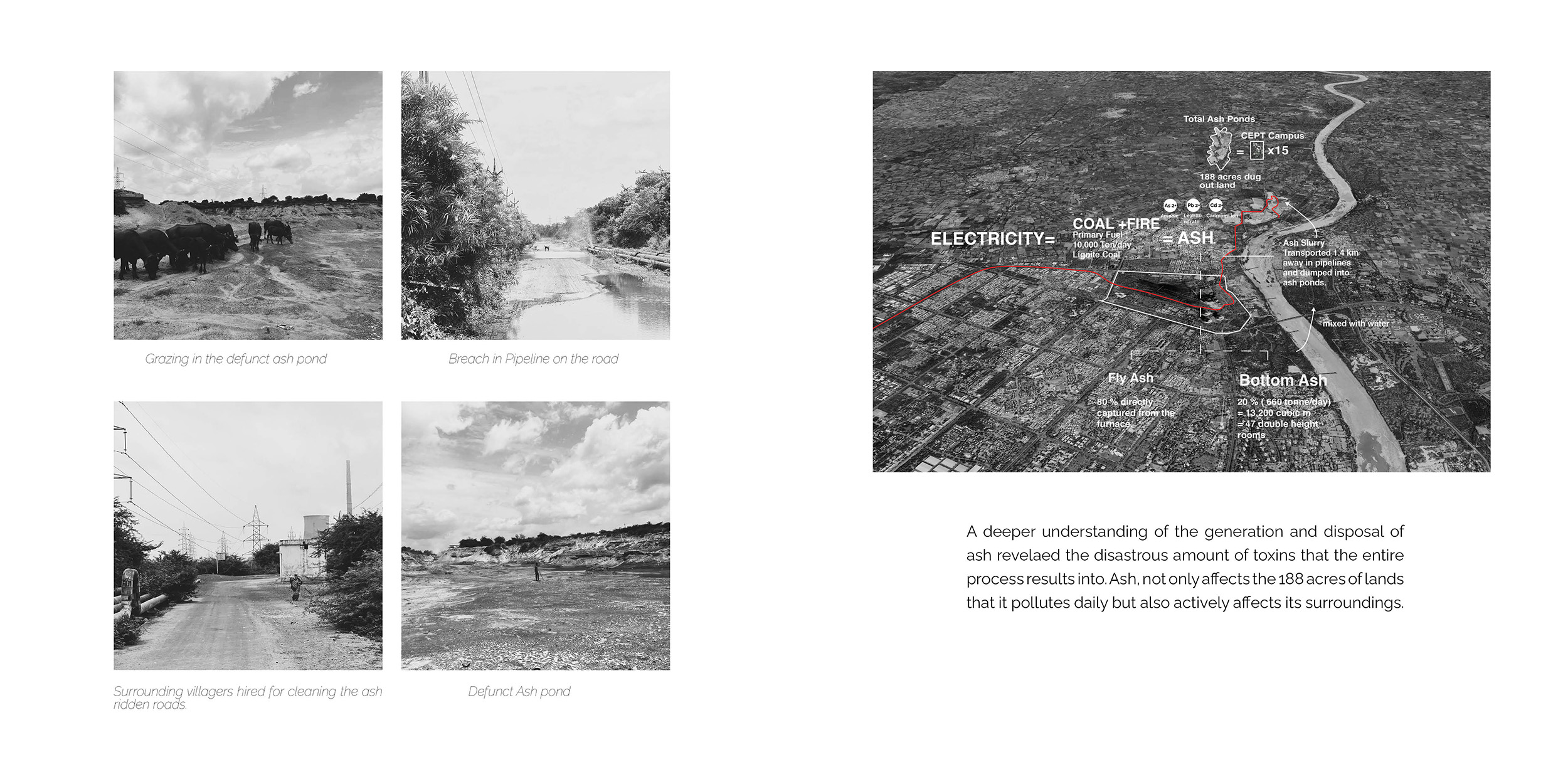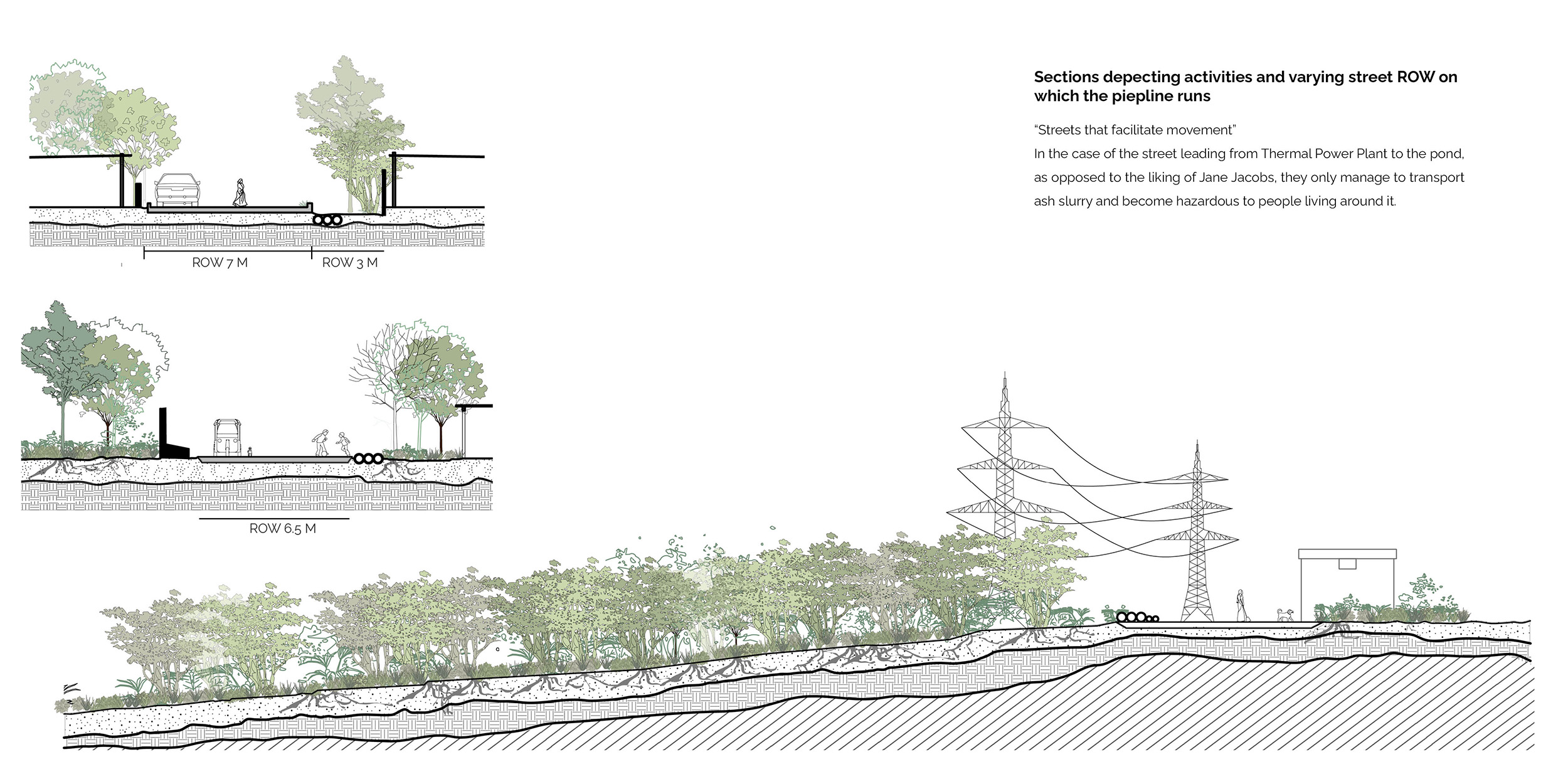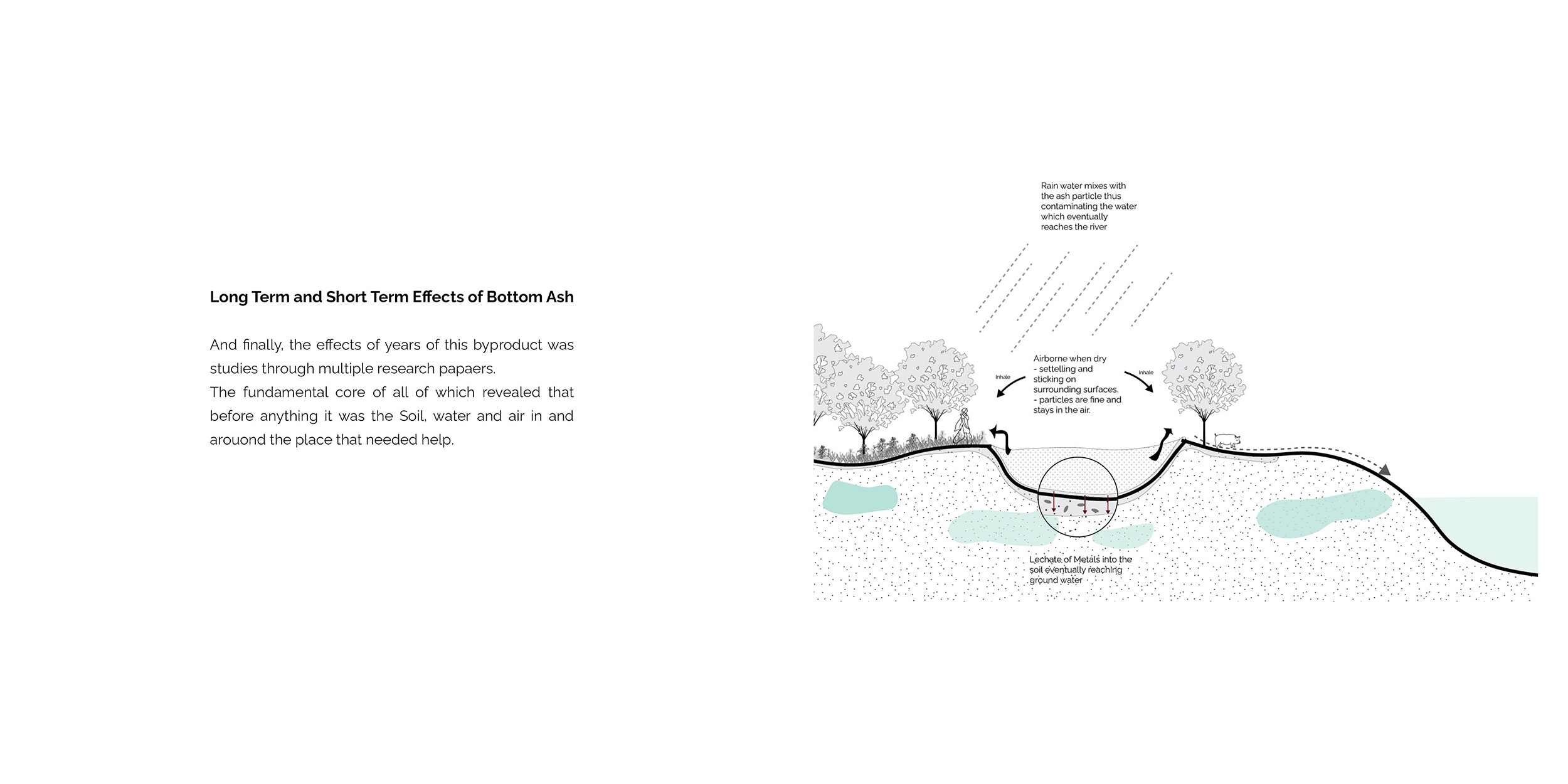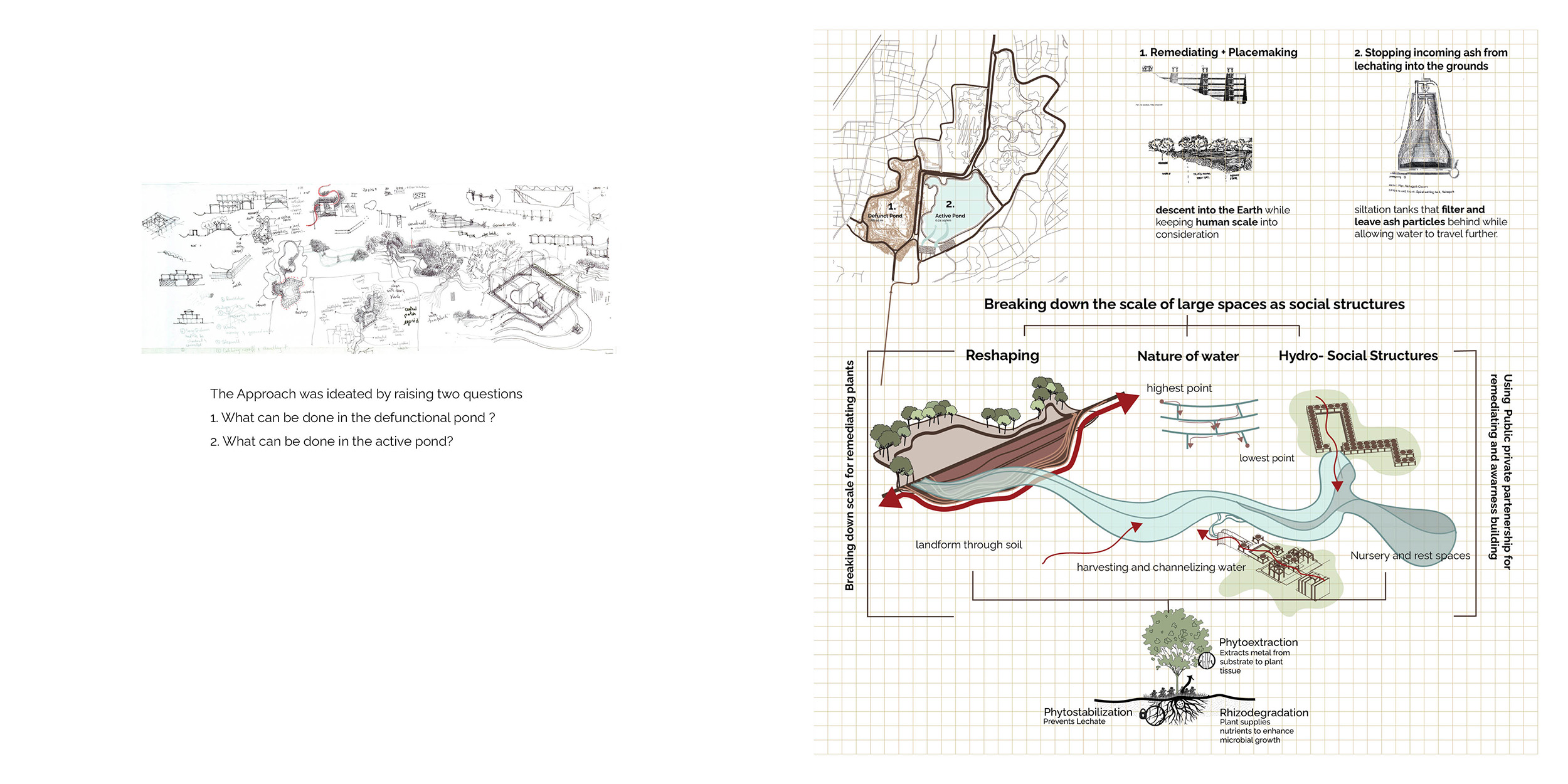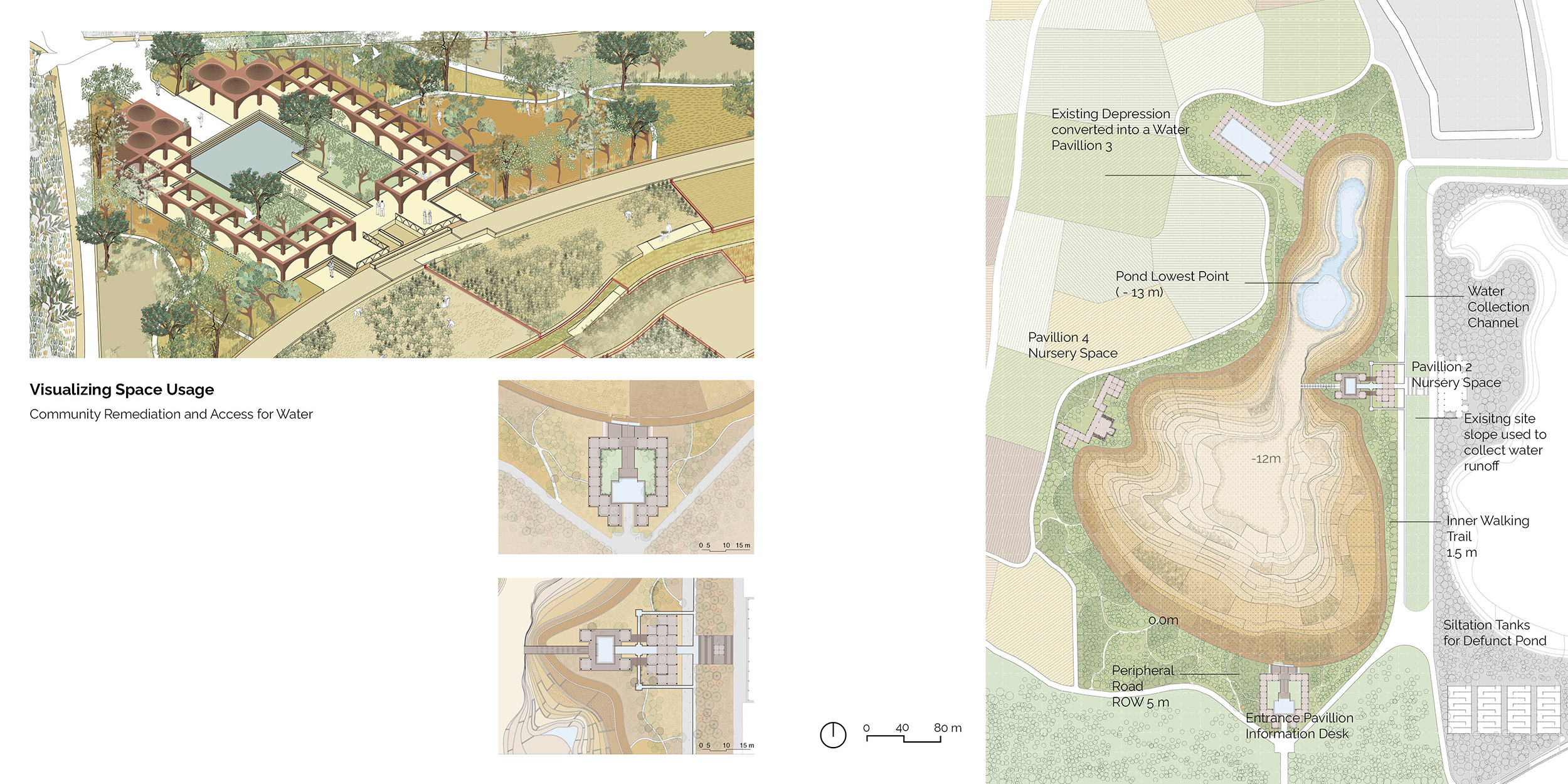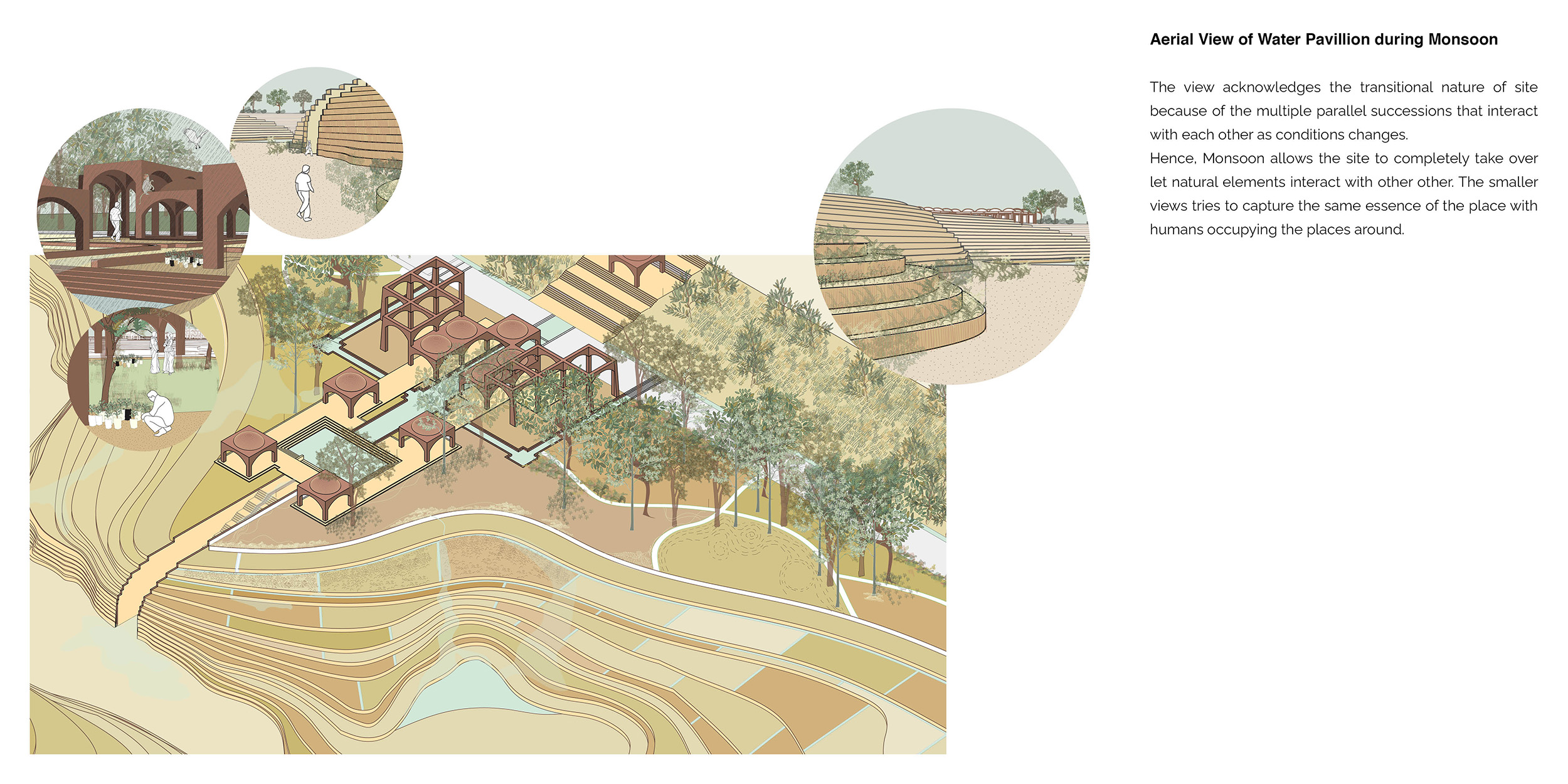The project is an attempt to explore the possible alternatives to depleted lands created because of human dependencies. 13,200 cubic m/day Ash, a byproduct of our coal dependency, is generated in the Thermal Power Plant that provides energy for the city of Gandhinagar. This ash heavy in metallic contents (Arsenic, Lead, etc.), dumped on lands as a slurry, affects the soil, water, air, and eventually, the biodiversity health in and around it thus making the ground dumping lands of the city. With the slow shift in the energy sector from fossil fuels to renewable energy resources for energy generation, the generation of ash has reduced over the years, and the utilisation of the same has increased. This leaves us with vast volumes of dug-out lands that hold alternate potential than just being filled and capped. This is where a place-making intervention is made in the landscape that celebrates these neglected grounds using soil to reaffirm the identity of the land while inviting people and water to meander along. Thus, remediation is achieved as a subset of place-making by reshaping the approach toward the ground.
The ground project
-
Tags
Cept University, Public space, Urban Design, Landscape design, Gandhinagar, productive landscapes, torrent waste scape, flyash, remediation, remediating landscapes
Author: Juhi Desai
The project is an attempt to explore the possible alternatives to depleted lands created because of human dependencies. 13,200 cubic m/day Ash, a byproduct of our coal dependency, is generated in the Thermal Power Plant that provides energy for the city of Gandhinagar. This ash heavy in metallic contents (Arsenic, Lead, etc.), dumped on lands as a slurry, affects the soil, water, air, and eventually, the biodiversity health in and around it thus making the ground dumping lands of the city. With the slow shift in the energy sector from fossil fuels to renewable energy resources for energy generation, the generation of ash has reduced over the years, and the utilisation of the same has increased. This leaves us with vast volumes of dug-out lands that hold alternate potential than just being filled and capped. This is where a place-making intervention is made in the landscape that celebrates these neglected grounds using soil to reaffirm the identity of the land while inviting people and water to meander along. Thus, remediation is achieved as a subset of place-making by reshaping the approach toward the ground.
